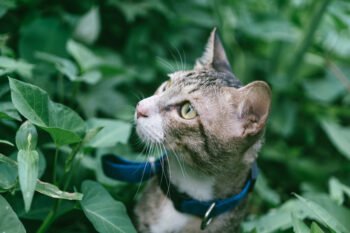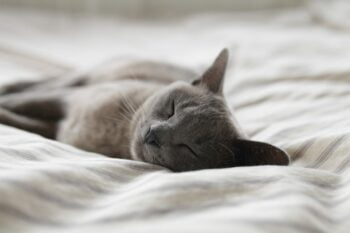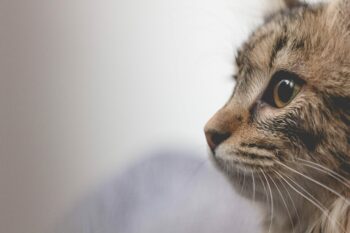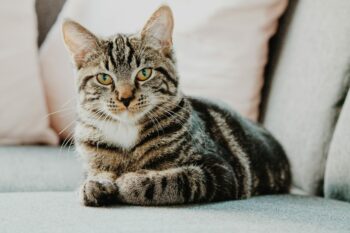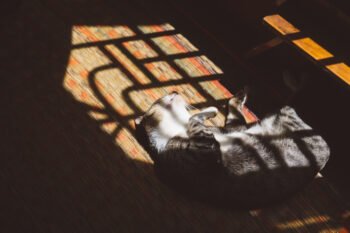Most feline owners have experienced that moment when their cat dashes across a surface that holds breakable objects. Often, faster than you can say, “hey, no, stop. . .” the moment usually passes and — miraculously — nothing has been broken, or even dislodged. Virtually all felines, from jungle cats to domesticated kitties, possess these smooth moves. You may, however, be surprised to know that your feline friend draws on a lot more than “instinct” to navigate.
A recent study found that when cats step over an object with their front legs, their back legs automatically go with the flow. That means your cat, in a split second, remembers what happened with the first step. It serves as proof for what good memories felines possess when it comes to their physical world. But how long can these memories last?
Keir G. Pearson, PhD, a professor of physiology at the University of Alberta, Canada, and her colleague David A. McVea, found that after a cat steps over an object with its front legs, then is distracted for 10 minutes, it remembers just how big a step it needs to take with its back legs to clear the object. If the cats in the experiment were paused before they reached the obstacle, however, they completely forgot about it, meaning cats need to take that first step before memory takes care of the rest. “Basically, we have discovered that cats have a very good memory of objects relative to their bodies after they have interacted with the objects,” Dr. Pearson says.
Know Your Cat
Nancy Peterson, RVT, feral cat program manager for The Humane Society of the United States, points out, however, that cats don’t always maneuver accurately. They sometimes misjudge a jump and then may start to groom themselves to recover their poise. When in a playful or energetic mood, they may also sometimes deliberately knock over knick-knacks in their way.
“While the report mentions that they have this spatial memory and so they can avoid knocking things over, they also delight in knocking things over,” she says. Therefore, if you want to protect precious family heirlooms, put them away and remember your cat can leap very high, so even putting the item on an elevated shelf may not protect it.
Though many factors come into play with regard to how cats navigate — their highly sensitive whiskers, their ability to see in the dark and the stability that their tails offer — knowledge about a cat’s spatial memory may be especially helpful to some cat owners, for example, those with blind cats. “Whether it’s spatial memory or not, blind cats have some kind of a map that they see in their mind,” Peterson says. “They’ve memorized their environment, so as long as you don’t change it, they can get around fine.”
Putting Movement Memory to the Test
Finding out just how long a cat can remember to follow through from forelegs to hind legs is tricky, since you can’t, of course, ask your pet to answer the question. But the experts speculate the duration could be more than the 10 minutes Dr. Pearson and Dr. McVea were able to record. “We don’t know how much longer the memory can last, but it could be much, much longer,” Dr. Pearson says.
There are many ways you can observe your cat’s spatial memory in action. For example, if your kitchen or dining room chairs have bars at the base, watch as your cat steps over the first bar, then clears it with its back legs, then steps over the next and so on. This knowledge about spatial memory also poses an interesting question: is it innate or is it a learning process?
“I wonder at what age it would begin?” Peterson asks. “I would think kittens may be less adept, but that would be something interesting to observe.” If you bring a new kitten into your household, you can even do a bit of experimenting yourself, just by observation. By watching your kitten, try to see if it’s as coordinated as an adult cat and whether this adroitness improves with age.
Learning from Cats
Dr. Pearson says he and his colleagues don’t believe that spatial memory is unique to cats, since they’ve observed similar behavior in dogs and horses. In fact, greater knowledge about the skillful way cats move teaches us more about all creatures, whether they walk on all fours or on two legs. Dr. Pearson says cats are very good animals for offering insight into human movement.
“Almost all the main concepts we have for describing the neurobiology of human locomotion have come initially from studies on cats,” he says. For cat owners, the research also offers new insight into our most elusive pets. “The more we understand how cats think, the better we can be at assigning motives to them that are true,” Peterson says. She notes that we tend to ascribe human motions and motives to cats, but this can backfire in our relationship with them.
“If we can think like a cat thinks, this will help us to understand them and to improve their quality of life and to hopefully resolve any challenges that crop up in our relationship with them,” she says.

